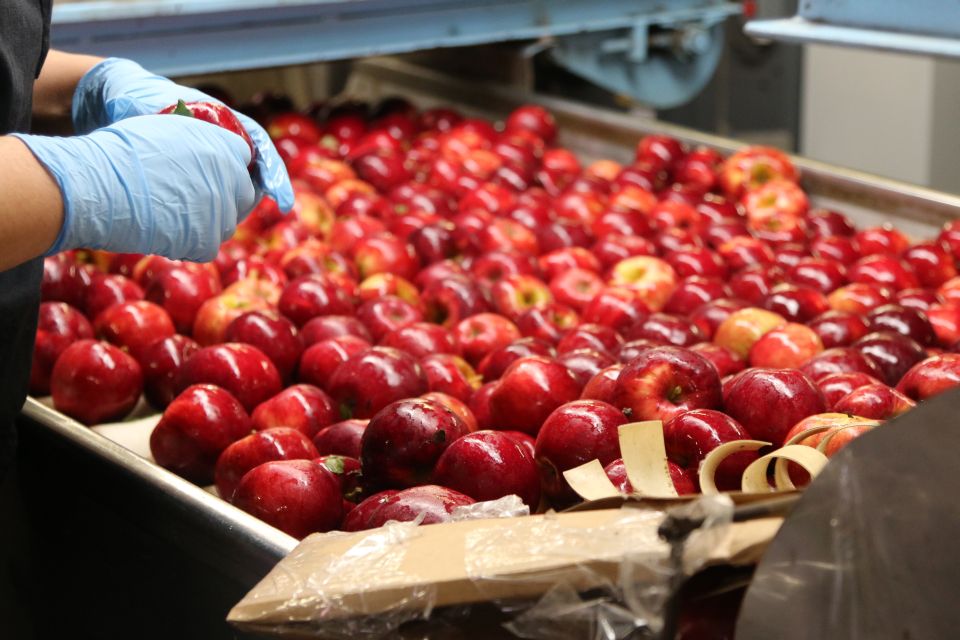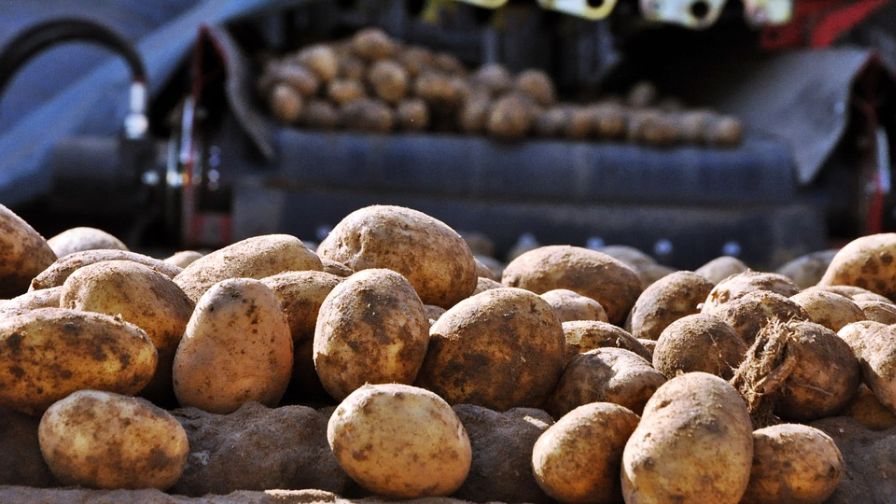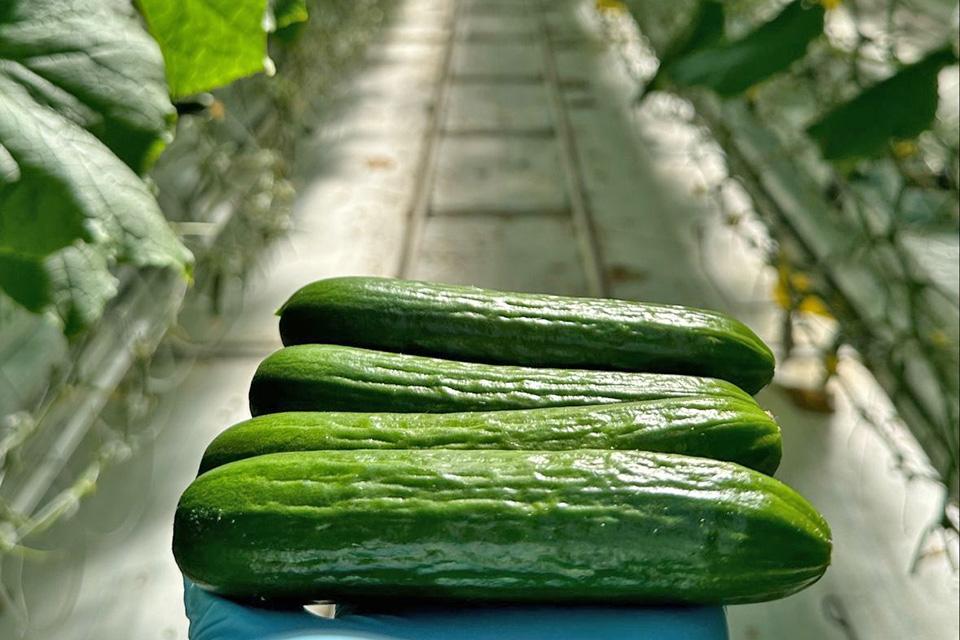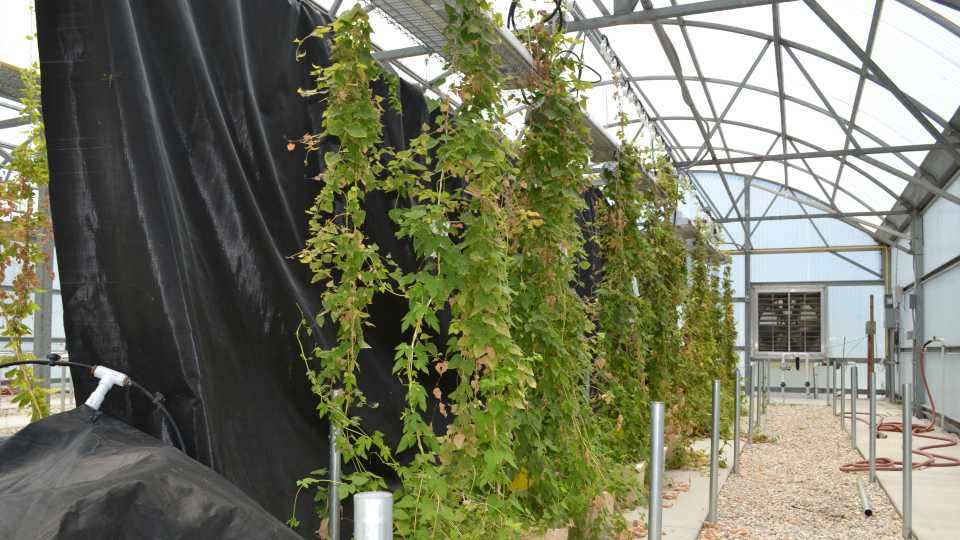Take A Closer Look At The Tall Spindle Axe Training System
In the January issue, I covered some of the results through six years of the NC-140 Sweet Cherry Canopy Architecture and Rootstock Trials in North America. Over the course of the next several columns, I will explore each of these intensive training systems in that trial in more depth. This month will focus on the Tall Spindle Axe (TSA), one of the more traditional of the three-dimensional canopies, which has demonstrated good early and sustained yields in the trial thus far.

Notice the branch angles in this photo of a TSA growing system. (Photo credit: Greg Lang)
The Basics of TSA
The TSA utilizes the classic “fruiting unit” of sweet cherry trees (see Growth Progression diagram): a 3-year-old section of branch that contains fruiting spurs (multiple fruit buds and leaves at each node on wood beginning its third growing season), non-spur fruits (single flower buds, with no vegetative bud) and non-fruiting spur leaves on wood a year younger, and large single leaves on current season new shoot growth. Older branches contain these same fruit and leaf populations, plus older fruiting spurs since spurs can remain productive as long as their light environment remains favorable. The non-spur fruit is usually of the best quality (size and sweetness) while the more abundant spur fruit provides the best yield potential.
The TSA could be viewed simply as part of the ongoing evolution of various central leader tree architectures, such as the Zahn spindle and Vogel central leader canopies, which adapt readily to higher planting densities and create good light distribution throughout the canopy. In their natural forest habitat, sweet cherry trees tend to develop a central leader shape due to strong apical dominance — the ability of the terminal growing point(s) to inhibit outgrowth of lower lateral growing points.
Survival is improved by competing aggressively for light with surrounding trees, so the terminal shoot grows vigorously toward the top of the forest canopy. Several strong lateral shoots develop each spring primarily just below the new growth of the terminal, capturing as much light as high as possible in the canopy to compete with or shade out neighboring trees, at the expense of previously developed lower shoots that eventually become shaded and unproductive.
The Early Spindle Days
In the 1980s and 1990s, German pomologists such as Fritz Zahn and Tobias Vogel were familiar with the economic advantages that dwarfing rootstocks and higher tree densities were having in apple production. They began training cherry tree canopies to spindle (Christmas tree-like) shapes as well. These canopies required annual heading or bud-scoring to break the apical dominance and initiate lower lateral branches, and removal of the upper buds that otherwise would have grown into strong branches, shading upper lateral branches. Initially these utilized standard Mazzard seedlings or Colt rootstocks, the latter of which provided a modest amount of vigor control when grown without irrigation.
The adoption of spindle cherry canopies advanced significantly as new precocious and dwarfing cherry rootstocks from the University of Giessen, aka the Gisela series, became commercially available in the 1990s. Not only did these rootstocks promote very early flowering, provide various levels of vigor control, and yield prodigiously, they also exhibited a bit less apical dominance. This resulted in easier lateral branch formation and wider branch angles to better achieve the spindle shape (see Branch Angles diagram) desired for good light interception and distribution (and therefore good fruitfulness) from the top of the canopy to the bottom.
Spindle canopies evolved further in the 2000s, again following apple training systems, first as the French Solaxe and later as the Tall Spindle from the U.S. The Solaxe focused on minimal heading cuts and pendant orientation of long lateral branches, often through tying down, which ultimately resulted in fruit borne primarily on spurs and supported primarily by spur leaves. However, in cherry, fruit quality tended to decline as the Solaxe branches aged and required spur thinning to improve leaf-to-fruit ratios.
 How TSA Impacts Leaf Area
How TSA Impacts Leaf Area
TSA cherry training promotes the use of heading cuts to the previous year’s terminal shoots. This stimulates lateral branching (increasing leaf area, especially larger new shoot leaves compared to smaller spur leaves), maintains a favorable mix of spur and basal solitary fruit buds, and just as importantly, pre-emptively removes future densely-spaced spurs (reducing crop load) to yield a more balanced leaf-to-fruit ratio. Any upright, pendant, or overlapping lateral branches are removed via thinning cuts to maintain good light distribution. Thus, several significant crop and tree management tasks are accomplished entirely through specific pruning decisions.
TSA tree maintenance borrows the concept of selective fruiting limb renewal from the Kym Green Bush (KGB) cherry training system. In general, each year the largest limb on the leader should be cut back to a stub, preferably with a visible bud or young lateral shoot, to promote the continuous re-development of a relatively young population of fruiting spurs, to eliminate old spurs, and to maintain good light distribution throughout the canopy so that future buds for fruiting and renewal do not become too shaded. Likewise, adequate vigor must be maintained through good nutrition and irrigation, particularly on more dwarfing rootstocks like Gi.3, in order to achieve consistent and strong renewal.
While similar, TSA cherry training differs from Tall Spindle apple training in several ways. First, is the fact that the requisite well-feathered nursery trees for establishing Tall Spindle apple orchards generally are not available for cherry in the U.S. Second, there is no tying down of new branches or “columnarization” (removal of secondary lateral branches, leaving only spurs) of fruiting branches in cherry as there is in apple. These manipulations would shift the canopy too much toward a Solaxe-like fruiting relationship.










